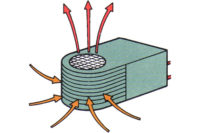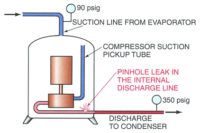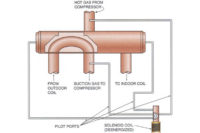Now, Bob’s company has promoted him to help train a new employee, right out of a school specializing in HVAC, just like Bob was. Bob is now Tim’s Btu Buddy. Tim is anxious to travel with Bob. Tim realizes that he is right out of school, with the theory and lab work that he accomplished in school, but still needs help. He knows that he worked with many of the components of the systems in the school, under ideal conditions with good light and air conditioning. Now it is into the field, sometimes under the house with poor lighting, or out on the rooftop in the sun, where the real action is. He is naturally and normally reluctant, but he has Bob to help guide him.
The season was getting colder and heating calls were beginning to come in. Bob and Tim were riding to a large residence that had three heat pumps to provide heating and cooling for the structure and Tim asked a question, “Why are heat pumps so popular?”
Bob said, “Well, you have asked a question that is fun to answer. Heat pumps became popular years ago here in the South, because in the summer there’s a big cooling load on the air conditioner and not so big of a load during the heating season. As you know, all refrigeration systems are heat pumps. Air conditioners in a home are a form of heat pump. They remove heat from where it is not wanted (inside the home) and deposit it where it will not even be noticed (outside the home). If you could turn a window air conditioner around in the window, it would absorb heat from outside air and put it inside. That is not practical, of course, so other methods were devised.”
Tim said, “Yeah, I would like to see that done. The control panel would be outside in the winter.”
Bob said, “We know that there is heat in outside air until the temperature drops to absolute zero or -460°F. All you have to do is figure out how to extract it and transfer it to the inside of the structure. You have seen refrigeration equipment remove heat from ice cream boxes down to -10°. You can actually feel the heat coming out of the back of them when they are running. So there is plenty of heat available in the air outside of a house. We just have to capture it and move it to the inside. The term ‘heat pump’ is a way to explain it. You learned in school that heat always flows naturally from a warm substance to a less warm substance, a cool substance. To get heat to move from a cool substance to a warm substance, like from 30° outdoor air to the inside temperature of 72°, I like to explain it as pumping the heat up the temperature hill. To move or pump the heat up the temperature hill, you will have to apply energy. In the case of the heat pump, that is electrical energy.”
Tim asked, “Wouldn’t it be just as easy to use electric energy to furnish electric heat?”
Bob answered, “Yes, it would be just as easy, but more expensive.”
Tim asked, “Why, isn’t energy just energy?”
Bob said, “Well, yes, but let’s look at two ways to use that energy.
“When you buy a watt of energy and use it to furnish electric resistance heat, you get 1 watt in and 1 watt out of usable heat; it is 100 percent efficient.
“When you use 1 watt of energy and use the compression cycle to capture the heat in an evaporator and pump it to the inside, you may get as much as 3.5 or 4 watts of usable heat. It could be thought of as 350 percent or 400 percent efficient. The engineers describe that as coefficient of performance or COP. When you get 3.5 watts of heat for an input of 1 watt, the appliance has a COP of 3.5 to 1.”
“That sounds really great,” said Tim. “Does it always work that well?”
Bob explained, “Those are the best of conditions. There are two basic types of heat pumps, air source and water source. There is a big difference in the two of them.
“The air-source heat pump, which is the most popular, has a heat exchanger that resembles an air conditioning condenser, with a few modifications. It uses air from the outside to furnish the heat for the structure. This device is known as the outdoor unit on a heat pump because it has two roles to play in the system. It is a condenser in the summer and rejects heat from the structure and, in the winter, it absorbs heat into the system to be rejected to the structure. Here is an illustration (Figure 1).”
Tim said, “That heat pump coil is only putting out 80° air. That doesn’t seem like it is near hot enough. Gas furnaces often put out 130° air.”
Bob said, “The structure could be heated with 80° air if there was enough of it. One of the things that you have to consider with an air source heat pump is the fact that as the outdoor air temperature drops, the outdoor coil will not absorb enough heat to meet the heating needs of the structure. The heat is there and could be captured with a large enough outdoor coil, but that is not practical. Supplemental heat may be used to give the structure enough heat. We will talk about electric resistance heat as the supplement, because it is the most common.
“As the outdoor temperature drops, the heat pump will reach a point that it can just absorb enough heat from the outdoors to break even, while running all of the time. This can be a temperature of 30°, just used as an example. When the outdoor temperature drops below 30°, called the balance point, the electric resistance heat will begin to phase in to provide supplemental heat (Figure 2). Typically it is done with the controls, to keep the electric resistance heat off as much as possible. Remember, it has a COP of 1:1.”
Tim added, “That doesn’t sound too efficient.”
Bob said, “With the heat pump running with a COP of about 2.5 to 1 because it is so cold, and the electric heat COP of 1:1, the combination is still better than 1:1. Remember two things, the electric heat is the last to turn on and the first to turn off, and the very cold weather doesn’t last very long. Most of the heating season is much warmer than the very low temperatures. That is why heat pumps have been popular in the South where the winters are not so severe.”
Tim asked, “Is a heat pump cheaper to operate than a gas furnace?”
Bob said, “Boy, that is a big question, there are a lot of variables. Natural gas, which is furnished in metropolitan areas, is much cheaper than propane gas which is furnished in the more rural areas. Natural gas prices are coming down as more reserves are being utilized, so you would have to do a detailed analysis to figure it out. The analysis is complicated, because the COP of a heat pump is a variable, depending on the outdoor temperature. What many people do is go with what their technician recommends or whatever is furnished in their house.
“Water-source and geothermal heat pumps are a different story. They are called geothermal heat pumps because they can be used with water or earth. They typically use ground water or the earth as the heat source in the winter and as the heat sink in the summer. The ground water and earth temperatures are a constant; they don’t vary like the outside air temperature does. The ground water and earth temperatures do vary from one part of the country to the other. In the South, the ground water and earth temperatures are warmer than in the colder climates up North.”
Tim asked, “Then, why doesn’t everyone use geothermal heat pumps?”
Bob responded, “Tim, you are full of good questions. Getting to the ground source is not easy. It is not like the air source where we just have to locate a fan and coil outside. You either have to bury pipes in boreholes or trenches, pump water from a well, or pump water from a lake or stream. Installation costs are the big thing and then there is the pumping cost. To bury piping, which will circulate a fluid, you need land. To utilize ground water you have to dig wells and to access lake or stream water you have to have a lake or stream nearby. Any time you use water from a well, the water has to be discharged somewhere safe and probably requires a permit. To use a lake or stream, permits will also probably be required. These are very efficient systems and operate very economically, but preparation is required.”
Tim said, “This all sounds like a lot of work and effort.”
Bob said, “The industry has gotten very inventive in getting heat out of the earth with earth to fluid heat exchange methods. Research on the various ways is an interesting subject.”
Tim then said, “You have explained a lot about the ‘Why of heat pumps,’ now would you explain some of the methods used for troubleshooting heat pumps.”
Bob said, “I think we have explained enough for today. Later we will go into some of the methods used while troubleshooting them.”
Publication date: 11/18/2013
Want more HVAC industry news and information? Join The NEWS on Facebook, Twitter, and LinkedIn today!












